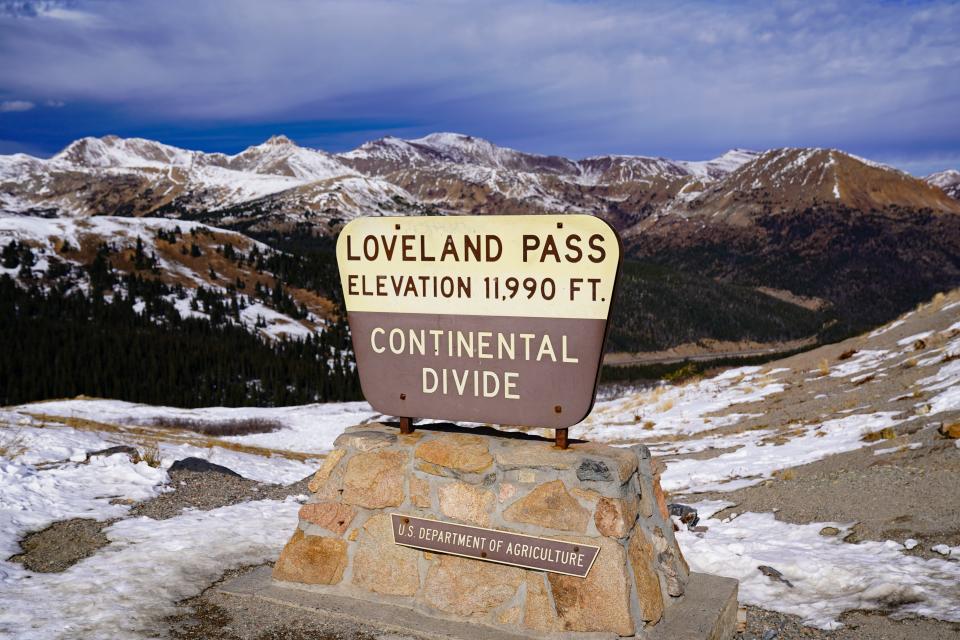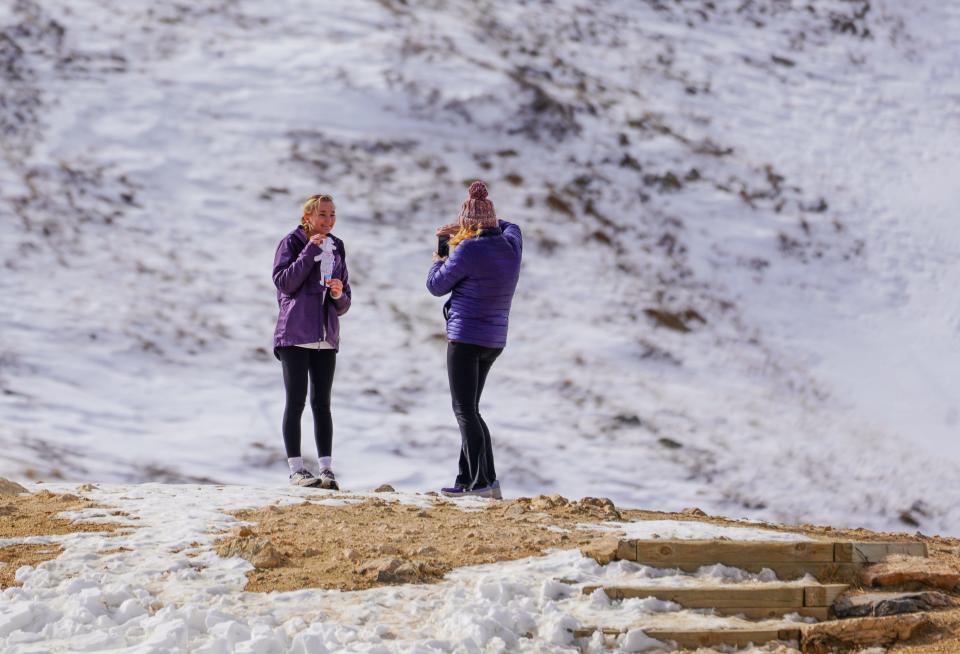The West is running out of water. A heavy snow could help, but will it come this winter?
DENVER – Snowfall forecasts for the West's mountains are critically important this winter after last year's unusually heavy snow helped improve the region's long-simmering water crisis, including conditions at Lake Powell and downstream Lake Mead outside Las Vegas.
Another heavy snow year could help reduce the need for water restrictions and help farmers continue producing irrigated crops such as melons, lettuce and almonds.
The Rocky Mountains are already blanketed in snow, and climatologists are hopeful this year's predicted El Niño conditions will power good runoff for the all-important Colorado River this summer.
The mountains of Colorado contribute more than half of the water that flows into Lake Powell, the massive reservoir between Utah and Arizona that helps store and distribute water to 40 million Americans across the west, including California. Wyoming's Green River, which joins the Colorado River near Moab, Utah, is the other significant source.
"I would use the term cautious optimism," said Peter Bennett Goble, a climatologist and water availability specialist at the Colorado Climate Center.

What are the snow predictions for this winter?
In general, El Niño conditions cause good snowfall earlier in the winter in California's Sierra Nevada mountains, and then heavier snow later in the winter for the Rockies. El Niño is a centuries-old weather pattern where trade winds that normally blow warm ocean water west toward Asia weaken, allowing the warm ocean water to pool off the coast of North America, altering the flow of the jet stream. It usually leads to warmer, drier winter conditions in the northern and eastern United States but wetter ones in the south, according to NOAA.
"Our seasonal outlooks for the winter season can be characterized as 'leaning toward' above normal-precipitation for much of the Central and Southern Rockies, Central Great Basin, and parts of the Southwest," said Scott Handel, a meteorologist at NOAA's Climate Prediction Center. "If you are a snow lover, this could be good news."
Handel cautioned that no two years are exactly alike. And just one or two large storms ‒ or the absence of those storms ‒ can dramatically alter the amount of water that falls as snow to melt and run downstream.
How does the snow prediction affect Lake Powell and Lake Mead?
Because so much of the snow that falls on the Rockies flows into Lake Powell via the Colorado and Green rivers, a good snow year would again increase their levels as it did this past summer. Last winter saw record-setting snowfall in some parts of the west, and that helped raise the level of Lake Powell, which flows into Lake Mead via the Grand Canyon. But experts say last winter's snow didn't resolve the ongoing shortage of water in those lakes.
Experts say many years of significantly above-average winters are needed to bring Powell and Mead close to full because farmers and cities across the West use more water than the Colorado River typically provides, and the reservoirs have been slowly draining to make up the difference.
"When the snowpack is good not just here but for neighboring states, that takes a little bit of the pressure off Colorado to supply water to the basin across the west," Goble said.
In the spring, the Biden administration helped broker a deal where California, Arizona and Nevada agreed to reduce their water use from the Colorado River in exchange for more than $1 billion in aid payments to farmers, irrigators and other water users, along with Native American tribes that are legally entitled to water. That voluntary deal was possible in part because the heavy winter snow last year softened the ongoing shortage crisis. Today both reservoirs remain far below full, and predictions suggest they'll remain that way through the end of 2024 even under the snowiest of winters.
The deal frees up about 3 million acre-feet of water that would have otherwise been used through 2026. In the West, an acre-foot of water ‒ 326,000 gallons ‒ is enough to serve two average homes for a year.

What are the current levels of Lake Powell and Lake Mead?
As of early November, Lake Powell's surface stood at 3,572 feet above sea level, which is about 12 feet lower than it reached at its fullest in early July.
Lake Mead was at 1,065 above sea level, only slightly lower than the fullest it reached last year, but still far below its lowest point in 2020.
Regulators move water from Lake Powell into Lake Mead to ensure there's enough water in the downstream reservoir to provide drinking and irrigation water, along with water to turn the hydroelectric turbines that help keep the lights on in Las Vegas.
Officials predict that Lake Powell will rise to around 3,600 feet next spring under the most likely snowfall scenario, while Lake Mead could come close to 1,075 feet. If the water levels drop too low, there won't be enough water for users or to make electric power. As of now, the chances of Lake Powell dropping below that critical level stands at 8%, and 4% for Lake Mead, through the end of 2026, according to federal officials.
What are the long-term predictions for snowfall across the West?
Not great. El Niño, and the opposite La Niña, are considered short-term variations in the climate, but overall things are getting warmer and drier across much of the West due to climate change. That means generally less rain and snow, part of a process called aridification.
"If we look at trends in peak snowpack, you generally see it's down anywhere 10-15%," Goble said. "While we know there are huge variations from year to year, that's a trend we expect continue in the long run."
Simultaneously, warmer air temperatures means the ground dries out quicker and can absorb more melting snow. Goble said studies have shown that for about every 2 degrees F the average temperature rises, there's a corresponding 3%-9% decrease in water runoff, even if the amount of precipitation remains the same.
What is the Biden administration doing to prepare for future shortages?
While the spring 2023 deal announced by Biden officials helps in the short term, water users across the West all understand that there's just not enough water from the Colorado River to go around. The problem is that no one wants to reduce their water use without being compensated ‒ and any reductions will inevitably force major changes in farming and new suburban development, particularly in California and Arizona, but also in Utah, which has been one of the fastest-growing states for a decade.
That deal expires in 2026, and Biden officials are working on a longer-term plan they hope offer as a proposed solution by the end of 2024. Advocates say those solutions will likely require a combination of conservation, changes to farming and new water-efficiency programs for tens of millions of Americans.
This article originally appeared on USA TODAY: As water crisis bares down, the West watches 2023-24 snow forecast

